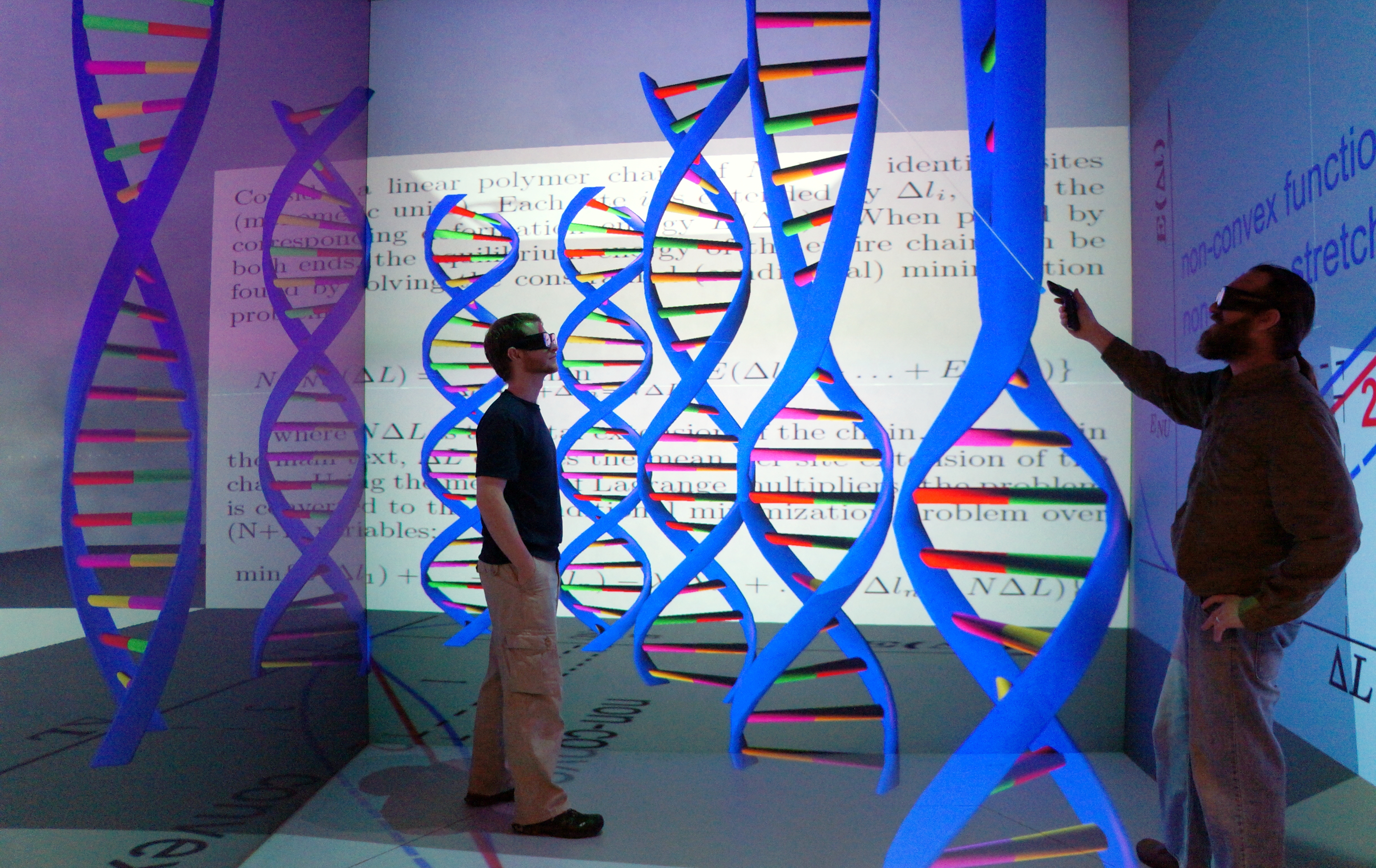Compaction and flexibility of the DNA
An intriguing
new phenomenon
was reported experimentally [see works of J. Widom's group]: on short
length scales (~ 100 b.p.) DNA double helix does not behave as a
relatively stiff rod, as might be expected based
on its conventional
persistence length value
of ~ 150 b.p. In contrast, short DNA fragments were found to cyclize
spontaneously, with an appreciable probability.
Exactly how this unusual flexibility is accommodated structurally is not
known.
Since relatively short, bent DNA fragments participate in
many vital biological processes, the issue is important.
We computer simulations and basic physics to understand
the mechanism behind the phenomenon, and develop a novel theory of polymer deformation, see e.g. Aleksander V. Drozdetski, Abhishek Mukhopadhyay and Alexey V. Onufriev, ``Strongly bent double-stranded DNA: reconciling theory and experiment", Frontiers in Physics 7, 195 (2019).
 The new model explains several counter-intuitive phenomena in DNA deformation via convex properties of the deformation energy (demsostration to a student in 3D immersive environment. Artwork: Nicholas Polys).
The new model explains several counter-intuitive phenomena in DNA deformation via convex properties of the deformation energy (demsostration to a student in 3D immersive environment. Artwork: Nicholas Polys).
This movie shows an MD simulation of the nucleosomal DNA (146 bp) at 300K in implicit solvent. To facilitate visual analysis of the structural features, the actual trajectory is played repeatedly many times. For details, see J. Zmuda and A. Onufriev, ``A computational study of nucleosomal DNA flexibility", Biophys. J. 2006. The authors thank TIZBI, Inc. for the help with the animation and artistic rendering issues.